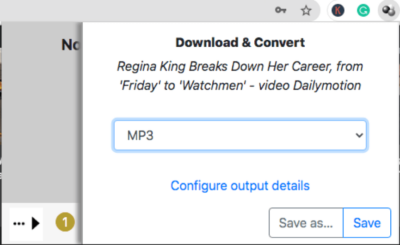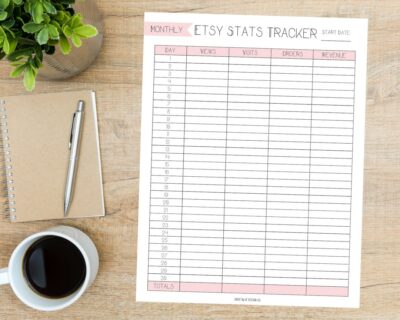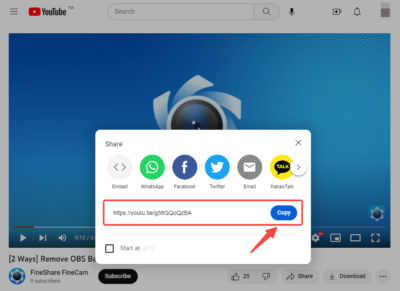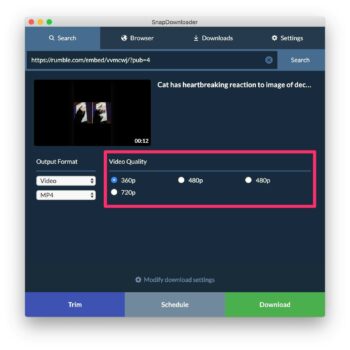Spotify's Auto-Add feature is designed to enhance user experience by dynamically adding songs to your playlists based on your listening behavior and preferences. The algorithm analyzes your listening history, favorite genres, and liked tracks to suggest and automatically add songs that align with your musical taste. While this functionality can introduce users to new music, it may not always align with everyone's preferences, leading to the need to disable it.
Here's a breakdown of how the Auto-Add feature operates:
- Listening Patterns: The algorithm observes the songs you frequently listen to and identifies patterns in your musical preferences.
- Genre Analysis: It takes into account the genres you favor and aims to recommend songs within those genres.
- Liked Tracks: If you frequently like or save particular tracks, the Auto-Add feature uses this information to suggest similar songs for automatic inclusion in your playlists.
- Dynamic Updates: The system continually adapts to your evolving taste, making real-time adjustments to the songs it suggests for auto-addition.
While the intention behind Auto-Add is to provide users with a seamless and personalized music discovery experience, some users may find it intrusive or prefer more control over their playlists. If you've experienced unexpected additions that don't align with your musical preferences, it's time to take control and disable the Auto-Add feature.
Understanding how the algorithm interprets your listening habits can help you make informed decisions about whether to keep or disable the Auto-Add feature. In the next section, we'll explore the reasons users might want to prevent Spotify from automatically adding songs to their playlists.
Reasons to Prevent Auto-Add
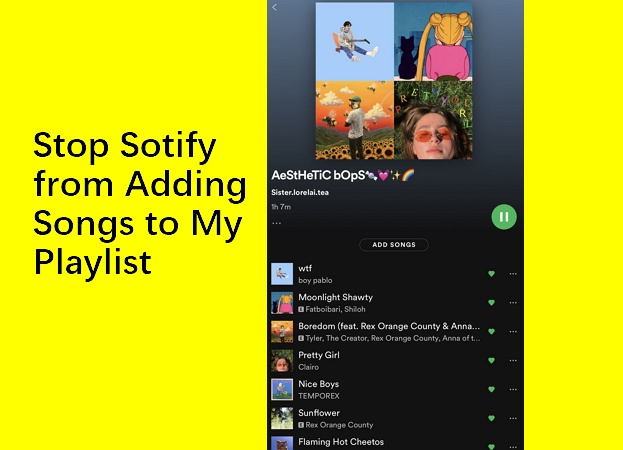
While Spotify's Auto-Add feature aims to enhance the music discovery process, there are several reasons why users might find it beneficial to prevent automatic additions to their playlists:
- Unwanted Variability: The automatic addition of songs can introduce a level of unpredictability to your playlists, causing them to deviate from your carefully curated collection.
- Privacy Concerns: Some users may be concerned about the algorithm's ability to analyze their listening habits, raising privacy issues and the desire for more control over their data.
- Precision Preferences: Individuals with specific musical tastes may find that the Auto-Add suggestions don't always align with their precise preferences, leading to a desire for more manual control.
- Playlist Consistency: For those who enjoy creating themed playlists or maintaining a consistent musical atmosphere, unexpected additions can disrupt the intended flow.
Preventing Auto-Add empowers users to maintain a more hands-on approach to playlist curation. By taking control of the content that gets added to their playlists, users can ensure a more personalized and satisfying listening experience.
It's important to note that while the Auto-Add feature is beneficial for some users, preferences vary. Spotify recognizes this diversity and provides the flexibility for users to disable the feature if they find it doesn't align with their expectations. In the next section, we'll guide you through the steps to disable Auto-Add, giving you the freedom to curate your playlists according to your unique musical tastes.
Also Read This: 123RF vs Adobe Stock: Comparing Two Prominent Stock Image Providers
Steps to Disable Auto-Add
Regaining control over your Spotify playlists is a straightforward process. Follow these simple steps to disable the Auto-Add feature and curate your music manually:
- Login to Your Spotify Account: Open the Spotify application on your device and log in to your account to access your playlists and settings.
- Go to Playlist Settings: Navigate to the playlist for which you want to disable Auto-Add. Click on the three dots (...) next to the playlist's name to access the options menu.
- Access Playlist Settings: From the options menu, select "Playlist Settings" to enter the settings page specific to the chosen playlist.
- Toggle Auto-Add Off: Look for the Auto-Add option in the settings page. You'll find a toggle switch—simply turn it off to disable the Auto-Add feature for that particular playlist.
- Save Changes: Don't forget to save your changes before exiting the settings page. This ensures that your preferences are applied, and the Auto-Add feature is successfully disabled.
By following these steps, you take control of your playlist's content, preventing Spotify from automatically adding songs based on its algorithm. This gives you the freedom to curate and maintain playlists that truly reflect your musical preferences.
If you have multiple playlists and wish to disable Auto-Add for each of them, repeat the steps for each playlist individually. Additionally, keep in mind that disabling Auto-Add is reversible; you can re-enable it at any time if you decide to explore automated recommendations again.
In the next section, we'll address common issues users may encounter while attempting to disable Auto-Add and provide troubleshooting tips to ensure a seamless experience in managing your playlists.
Also Read This: Adobe Stock vs Alamy: Choosing the Best Stock Photography Platform
Common Issues and Troubleshooting
While disabling the Auto-Add feature on Spotify is generally a smooth process, users may encounter occasional issues. Here are some common challenges and troubleshooting tips:
- Settings Not Saving: If you experience issues with settings not saving, ensure that you have a stable internet connection. Try refreshing the page and saving your changes again.
- Delayed Updates: Changes to the Auto-Add settings may not take effect immediately. Give it some time, and if the issue persists, log out and log back in to refresh your account.
- Mobile App Differences: Settings and options may vary between the desktop and mobile versions of Spotify. If you're using the mobile app, explore the playlist settings to locate and disable Auto-Add.
- Outdated App Version: Ensure that you're using the latest version of the Spotify app. Outdated versions may have bugs that have been addressed in newer releases.
In case you encounter persistent issues despite attempting the troubleshooting tips, you may want to reach out to Spotify's support for personalized assistance. The Spotify community forums are also a valuable resource, where fellow users may share insights and solutions to specific problems.
Remember, the goal is to empower users with control over their listening experience. If technical hiccups arise, these troubleshooting steps can help ensure a seamless transition to a manually curated playlist.
Now that you've successfully disabled Auto-Add and addressed any potential issues, let's hear from other Spotify users about their experiences and insights in the following section.
Also Read This: Here’s the Tool You Need for Downloading Mixes from Mixcloud
User Experiences
Exploring the experiences of Spotify users after disabling the Auto-Add feature provides valuable insights into the impact of manual playlist curation on their overall satisfaction. Here are some shared stories and perspectives:
- Enhanced Playlist Consistency: Users appreciate the ability to maintain a consistent theme or mood in their playlists without unexpected additions disrupting the flow.
- Improved Personalization: Manual curation allows users to be more intentional about the content in their playlists, leading to a more personalized and enjoyable listening experience.
- Privacy Assurance: Some users feel more at ease knowing that their listening habits are not automatically analyzed, addressing privacy concerns associated with the Auto-Add algorithm.
- Discovery Control: While Auto-Add is beneficial for music discovery, users prefer having control over the songs added to their playlists, ensuring that each addition aligns with their unique taste.
These shared experiences highlight the positive impact of taking control over playlist curation. Users appreciate the flexibility to tailor their playlists to their preferences, creating a more fulfilling and enjoyable music journey on Spotify.
It's important to note that user experiences may vary, and some individuals may still find value in the automated recommendations provided by Auto-Add. The key is to empower users with the choice to customize their listening experience according to their individual preferences.
As we conclude this exploration of user experiences, we'll address common questions and concerns in the next section, providing a comprehensive FAQ to assist users in navigating the nuances of Spotify's Auto-Add feature.
Also Read This: Adobe Stock Image Free Download Without Watermark: Best Practices
FAQ
Here are answers to some frequently asked questions regarding Spotify's Auto-Add feature and the process of preventing songs from being added automatically to your playlists:
-
Q: Can I disable Auto-Add for all my playlists at once?
- A: Currently, Spotify allows users to disable Auto-Add on a per-playlist basis. You will need to repeat the process for each playlist individually.
-
Q: Will disabling Auto-Add affect my personalized recommendations?
- A: Disabling Auto-Add only prevents songs from being automatically added to your playlists. It does not impact the personalized recommendations provided by Spotify based on your listening habits.
-
Q: Can I re-enable Auto-Add after disabling it?
- A: Yes, the process is reversible. You can go back to the playlist settings and toggle the Auto-Add switch to enable the feature again.
-
Q: Do changes to Auto-Add settings apply immediately?
- A: Changes may not take effect instantly. Give it some time, and if the issue persists, try refreshing the page or logging out and back into your account.
-
Q: What if I encounter issues not covered in the FAQ?
- A: If you face persistent issues, consider reaching out to Spotify support for personalized assistance. Additionally, the Spotify community forums can be a helpful resource for finding solutions to specific problems.
These frequently asked questions aim to provide clarity on common concerns users may have about the Auto-Add feature. If you have additional questions, feel free to explore Spotify's support resources for more information.
Conclusion
In conclusion, regaining control over your Spotify playlists by preventing songs from being automatically added through the Auto-Add feature is a simple yet impactful step toward a more personalized music experience. By understanding how Auto-Add works, the reasons users may want to disable it, and the steps to take control, you've empowered yourself to curate playlists that truly reflect your musical preferences.
We explored common issues and provided troubleshooting tips, ensuring a smooth transition to manual playlist curation. User experiences highlighted the positive impact of this control, ranging from enhanced playlist consistency to improved personalization and privacy assurance.
For those with lingering questions, our comprehensive FAQ addressed common queries related to Auto-Add, offering insights into the process of disabling the feature and its implications for your Spotify journey.
As you continue your musical exploration on Spotify, remember that the platform evolves, and features may be refined. Stay informed about updates and continue enjoying the freedom to curate playlists that resonate with your unique taste. Whether you choose to embrace the automated recommendations or prefer the hands-on approach, Spotify provides the flexibility for you to shape your music journey according to your preferences.
Thank you for joining us on this journey to prevent the Auto-Add annoyance on Spotify. May your playlists be a reflection of the music that moves you!









